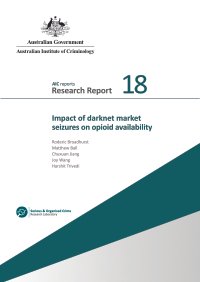By Alex H. Kral, Jamie L. Humphrey, Clyde Schwab, Barrot H. Lambdin, Bradley Ray,
Importance Opioid-involved overdose mortality has been on the rise for 2 decades in the US, exacerbated by an unregulated drug supply that is unpredictable and has increasingly contained highly potent fentanyl analogs starting a decade ago.
Objective To determine whether there is a geospatial association between law enforcement drug seizures and opioid-involved overdose mortality in San Francisco.
Design, Setting, and Participants This cross-sectional study used location- and time-stamped overdose mortality data from the Office of the Chief Medical Examiner and publicly available crime data from the San Francisco Police Department between 2020 and 2023 to assess whether location and time of law enforcement drug seizures were associated with subsequent opioid-involved overdose mortality. Data were analyzed from January 2020 to September 2023.
Exposures Time-stamped locations of law enforcement drug seizures involving a drug distribution charge.
Main Outcomes and Measures The primary outcomes were the time and location of (1) overdose mortality involving any opioid and (2) overdose mortality involving fentanyl or any fentanyl analog. The relative risk (RR) and 95% CIs for endemic and epidemic factors were calculated.
Results There were 2653 drug seizure crime events that involved any drug distribution charge and 1833 overdose deaths that tested positive for any opioid or synthetic opioid, including heroin and fentanyl analogs. Within the surrounding 100 meters, law enforcement drug seizures were associated with increase risk of fatal opioid-involved overdoses the day following the drug seizure event (RR, 1.74; 95% CI, 1.06-2.83; P = .03) and elevated risk persisted for 7 days (2 days: RR, 1.55;95% CI, 1.09-2.21; P = .02; 3 days: RR, 1.45; 95% CI, 1.08-1.93; P = .01; 7 days: RR, 1.27; 95% CI, 1.11-1.46; P = .001). Similar statistically significant spatiotemporal patterns were observed in the 250- and 500-meter spatial bandwidths. Within each space-time kernel, the strength of the association, all of which were statistically significant, dissipated the further away in time and distance from the law enforcement drug seizure event.
Conclusions and Relevance The findings of this cross-sectional study suggest that the enforcement of drug distribution laws to increase public safety for residents in San Francisco may be having an unintended negative consequence of increasing opioid overdose mortality. To reduce overdose mortality, it may be better to focus on evidence-based health policies and interventions.
JAMA Netw Open. 2025, 11p.




